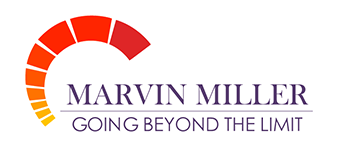The 7 Pillars of Content Marketing Strategy
Simply put, without a content marketing strategy in place there would be no road map that outlines your plans to advance your organisational goals supported by metrics or milestones, in a clearly aligned and integrated way.
There are two crucial factors to bear in mind about your content strategy. The first is to view it as a framework that sets the focus for creativity and innovation processes that produce a highly effective portfolio of paid, owed and earned content. The second is that content strategy is an integrated marketing philosophy closely linked with the sales funnel, search marketing via keywords, and social media although it should ideally come before social media strategy and ultimately help shape it.
Regardless of what type of marketing tactics you use, quality content should underpin all forms of your offline and/or online marketing.
How to devise a content marketing strategy
Plan for Purpose – Specifying the smart strategic objectives and the goals. Have clearly defined business goals with content that are the overarching reason every piece of content exists.
Tips:
- Include a content marketing mission statement to provide better focus for tactics
- Aim to conquer the 3 prongs of content marketing – Socialise, Publicise AND Optimise
- The strategy should be a framework that ignites creativity and innovation so avoid it being too prescriptive and limiting
- Be familiar with the types of content marketing goals:
Audiences – Includes the overview of the current intelligence about your target segments or personas and positioning. Continue to develop your target personas and communicate intelligence to your people.
Tips:
- Develop personas to target – Two simple ways to do this are
- For B2C – As a starting point is use Google Analytics to find out details like age, gender, and understand journeys through your website via clicks and times on site
- For B2B – Use at least one of the following in order of popularity according to Content Marketing Institute B2B research: Industry trends; the profiles of individual decision makers; company characteristics; stage in the buying cycle
- Resources permitting, look for synergies between your online personas and offline personas for a more holistic view
People – The details of the tasks, timescales, responsibilities and procedures for everyone in the content process including cross-functional colleagues and external partners.
Tips:
- Consider the role of third-party content e.g user generated content, guest blogs etc towards the bigger picture
- Influential and collaborative leadership skills are best suited towards managing external partnership relationships including influencer marketing. Analyse whether their goals, resources and capabilities are the right fit and a collaborative partnership can flourish. For more guidance perhaps read ‘Better stakeholder management’
Storyline and Principles – The brand storyline for the campaign(s) and the fundamental propositions that are the foundations for conversations including style guides, tone and design guidance.
Tips:
- Before doing content marketing identify your unique brand story and values. To do so use the ‘who, what, were, why, when and how’ technique or the ‘5 Whys’ technique
- You want to provide a framework to create kick ass content that adds value, solves a pain point or entertains whilst infusing it with your brand story to develop unique content propositions
- Don’t limit your brand. Your content can go beyond what you sell to what your target audience loves and shares such as the case of Red Bull’s content focuses on extreme sports
Channels – The decisions in light of your plan and audience(s) as to where you will source, create, publish and amplify content
Tips:
- Plan the journey and tailor to the channels – Consider ‘who’ are our targets segments (personas), ‘what’ content resonates best ‘ and where’ best to find them
- Stress the need to select keywords that align with your goals for website and content strategy
- Integrate with offline content – utilize mind maps to help develop strategy with a structure that assists information architecture
Processes – Highlighting a series of actions to repeat with each piece of content, including set of criteria for sign-off.
Tips:
- Provide scope for real-time marketing (RTM) or reactive marketing (near-time) including integrating your crisis communications protocols that deal with negative PR and trolls
- For outsourcing content creation aim to write outstanding ‘on brand’ and to objective content briefs
- Set realistic timelines for content production and distribution
- Use technology to collaborate around content ideas and processes. For instance, I use apps like Trello and Evernote that operate and synchronise across desktop and mobile devices
Performance Measurement – Specifying the budget, benchmarks and measurement. This is not just ROI, shares and likes, but must be related back to purpose.
Tips:
- Devise a good hierarchy of organisational goals from top line KPI’s through to headline content success metrics and then lower level content optimization metrics
- For ROI measurement work towards arriving at a point where you can calculate your costs across – Planning, Ideation, Production, Distribution, Measurement. Use a consolidated set of analytic tools and invest the time ahead of every campaign to set up tagging, grouping and tracking which will pay dividends for more accurate real-time / near-time tracking of your content marketing ROI
With these tips hopefully you will be on your way to creating or adjusting your content marketing strategy and producing better results. Be sure to add any further tips and best practices that work for you in the comments below.
About the Author: Marvin Miller is a Marketing Management & Campaigns Specialist who works across multi channel marketing strategy, campaigns and marketing implementation. You can follow his daily updates via Twitter and join his professional network via LinkedIn













Leave a Reply
Want to join the discussion?Feel free to contribute!